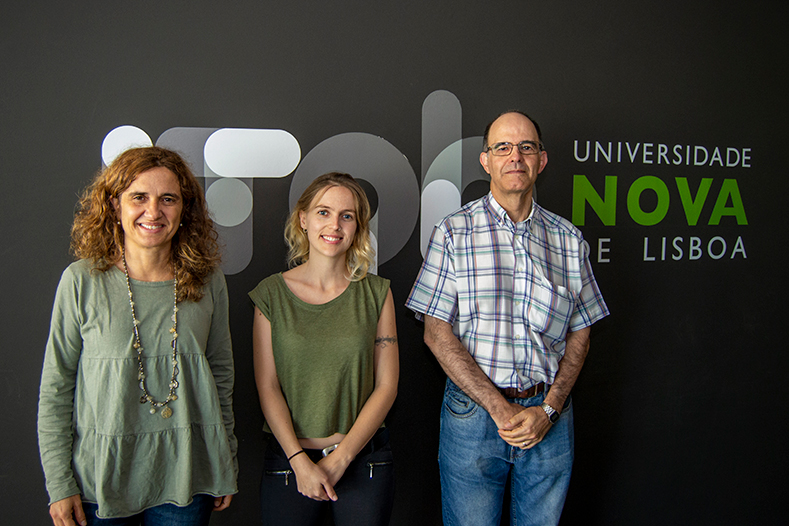Improving a biological hydrogen machine
Energy is one of the biggest challenges of the XXI century. Fossil fuels are both pollutant and finite, and their replacement by more sustainable energy sources is key to ensure life as we know it.
Hydrogen is a very attractive energy carrier, since it has a high energy density and its combustion produces only water. Hydrogen-fuelled cars and hydrogen-filling stations are already a reality, but several scientific hurdles still have to be overcome to obtain a hydrogen-based energy system that is economic and sustainable. Hydrogen is still produced from fossil fuels in energy-intensive processes, and its use via fuel cells still requires precious metals that are rare and expensive.
However, hydrogen can be produced from non-fossil sources. Biological systems produce and consume hydrogen with high efficiency at room temperature, using enzymes – hydrogenases – that only require earth-abundant metals, like iron and nickel. The study of these enzymes and their catalytic mechanism is important for the development of new synthetic catalysts able to convert hydrogen in an efficient and sustainable way.
Hydrogenases have also been explored to develop semi-synthetic catalysts for photochemical and/or electrochemical production and consumption of hydrogen. These efforts are often limited by the inactivation of these enzymes by oxygen. At ITQB NOVA, the teams of Inês Cardoso Pereira, Pedro Matias and Cláudio Soares have been working with a highly efficient [NifeSe] hydrogenase that shows very attractive properties for H 2 conversion (see below).
Now, together with colleagues from the Aix-Marseille Université, the Cardoso Pereira and Matias teams have engineered this enzyme to produce variants that show increased tolerance to oxygen inactivation, while maintaining high levels of activity. Surprisingly, the work revealed that this inactivation proceeds through access of O2 to the active site through hydrophilic channels in the protein, whereas it was previously believed that this molecule would only diffuse through hydrophobic pathways.
These results demonstrate that it is possible to design new variants with increased O2 tolerance, opening the way to improved semi-synthetic systems. These systems allow for a more efficient and sustainable production of Hydrogen or its oxidation in fuel cells to generate electricity, producing cleaner and safer energy.
The Cardoso Pereira team has also been involved in developing complementary lines of research on this topic. The development of a better performing biophotovoltaic system, which presents a more efficient electron transfer and minimizes short-circuiting pathways, and of dual-gas breathing H2/air biofuel cells, which facilitates the transport of the substrate, are other recent findings. These results, combined with an increased tolerance to oxygen reported in the most recent article, strengthens the viability of using hydrogen as a power source in semi-synthetic systems, making it even closer to becoming an alternative to more pollutant and expensive fuels.

Original paper:
Zacarias S; Temporão A; del Barrio M; Fourmond V; Leger C; Matias P* & Pereira IAC*
A hydrophilic channel is involved in oxidative inactivation of a [NiFeSe] hydrogenase
ACS Catalysis , DOI 10.1021/acscatal.9b02347
(IF 12.221)
Examples of recent papers exploring the high activity of the NiFeSe hydrogenase in several semi-synthetic systems:
Zhao F, Wang P, Ruff A, Hartmann V, Zacarias S, Pereira IAC, Nowaczyk MM, Rögner M, Conzuelo F & Schuhmann W
A photosystem I monolayer with anisotropic electron flow enables Z-scheme like photosynthetic water splitting.
Energ. Environm. Sci ., 2019 DOI: 10.1039/C9EE01901D
(IF 33.25)
Szczesny J, Markovi N, Conzuelo F, Zacarias S, Pereira IAC, Lubitz W, Plumeré N, Schuhmann W & Ruff A
A gas-breathing hydrogen/air biofuel cell comprising a redox polymer/hydrogenase-based bioanode.
Nature Comm. 2018 9, 4715
(IF: 12.353)
Ruff A, Szczesny J, Markovi N, Conzuelo F, Zacarias S, Pereira IAC, Lubitz W & Schuhmann W
A fully protected hydrogenase/polymer-based bioanode for high-performance hydrogen/glucose biofuel cells.
Nature Comm. 2018 9, 3675
(IF: 12.353)







